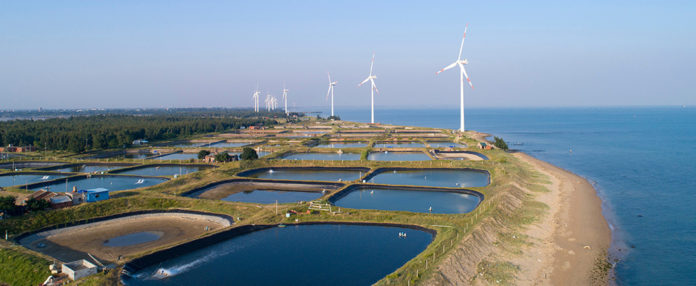SUZHOU, China – China aims to reach carbon neutrality by 2060, which will likely offer opportunities for metallocene polyalphaolefin as a base stock in lubricants for wind energy turbines, electric vehicles and engine oils designed to reduce emissions, a speaker from a Hangzhou-based MPAO startup said at an industry conference here.
“What can the lube industry do to help China achieve its carbon goal?” Du Dachang, vice president of sales at Apalene Technology, said at the Enmore Lubricants Conference in July. “I think mPAO might the answer.” Apalene was established in 2015 and supplies metallocene oligomerization catalysts, which are key to producing mPAO. To date its main customers have been Sinopec and PetroChina. In January it completed a Series A stock placement that raised ¥150 million (U.S. $21.8 million).
Du said mPAOs have advantages over conventional PAOs, chiefly better oxidative stability and better liquidity under low temperature, which make it ideal for use in gear oils for wind turbines in China.
“In China, wind turbines are often seen in mountains where temperatures could drop dramatically in winter,” he said. “Low-viscosity gear oils that can work well under extreme low temperatures are essential to the equipment.”
As one of the approaches to achieving its carbon goal, China plans to add another batch of 10,000 wind turbines in rural areas by 2025, according to the government’s 14th five-year economic plan.
Du was also optimistic about mPAO’s adoption for use in engine oil formulations for internal combustion engines – both for cars powered solely by such engines and for plug-in hybrids –saying the driving factor is the global push for ultra-low-viscosity oils with low Noack numbers, or low volatility.
In the United States, for example, SAE 0W-20 is expected to constitute 38% of the passenger car motor oil market by the end of 2029, according to Kline & Co. consultants. The grade already accounts for 37% of the market in Japan but will account for 52% by 2029. 0W-8 oils are gaining a foothold in Japan and should be 2% of the market by 2029, the firm forecasted.
Ultra-low–viscosity oils can further improve fuel efficiency and cut emission, but “they also mean a little compromise in volatility,” Du said. “Even oils blended with API Group III base oil cannot have it all.” Du said. However, more car makers are demanding the use of ultra-low-viscosity oils with low Noack.
Daimler, for example, requires SAE 0W-20 oils with Noack volatility no more than 11% in its MB229.71 specification, which was updated in 2021. Requirements are similar for Volkswagen’s 508/509 specification, which was also updated last year.
Transmission fluids with low viscosity are also desired for use in EV drivetrains, especially for the integrated drive module that has recently been gaining popularity, Du said. Aside from low viscosity, he added, data showed that transmission fluid formulations with mPAOs offer other properties that are favored for use in EVs’ IDMs, including higher thermal stability and a lower pour point than provided by non-metallocene PAOs.
While acknowledging that mPAOs are not in great demand in China today, Du predicted that will change soon.
“The powertrain system that we are used to for decades is going through a big revolution for better fuel efficiency and less emissions, and it will no doubt push oil suppliers to adopt mPAOs [as a base stock in lubricant formulations] for better compliance,” he said.
